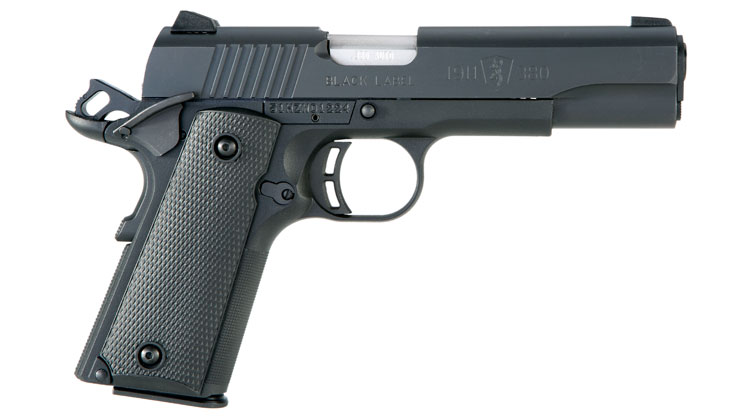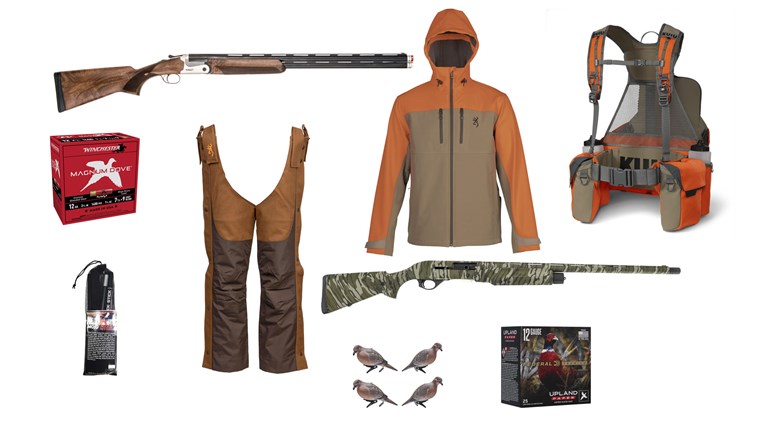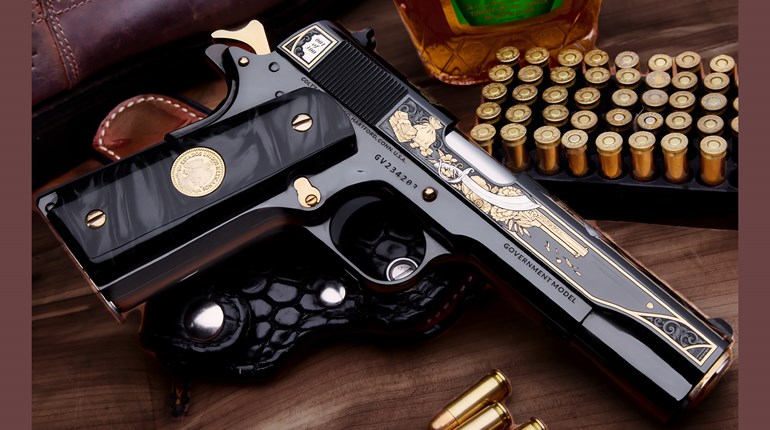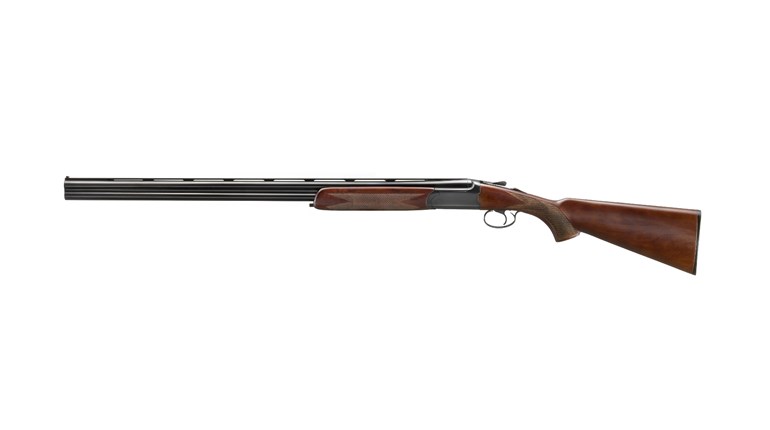
Some of the most intriguing ideas are also among the simplest. While the firearm industry scrambles every year to come up with new and previously unseen firearms to capture the consumer’s imagination, Browning got the bright idea to take the single-most beloved semi-automatic handgun of the past century and—rather than radically altering or “improving” it—simply shrink it so it fits the hands of more shooters.

“Shrink” is used advisedly here. The company didn’t merely chop down a full-size .45 ACP-caliber 1911; it created a 1911 that’s 85 percent of the size (and less than half the weight) of the original and chambered it in .380 ACP. The wonderful symmetry here is both the .380 ACP cartridge and the 1911 were created by John M. Browning. If this were music, it might be described as a J.M. Browning mashup.
The logic behind producing a reduced-size 1911 is obvious. The pistol has legendary virtues: simplicity, reliability, balance, ergonomics and a good-quality trigger pull. The only drawbacks have been its size and chambering—related issues that have made it less-than-ideal for some shooters.

Further, while the 1911 is a serious fight-stopper and can usually be carried with just a little thought and effort (particularly in Commander- and Officer-size pistols with aluminum frames), it has never been a particularly convenient concealed-carry gun.
The observation most make when gripping the 1911-380 is that it is small, but not too small. It actually fits a lot more hands than the original. It fits junior shooters, women and even men with fairly large hands, myself included.
While the initial thrill is the immediate mental and sensory comparison to the full-size 1911, the appreciation comes when you begin to compare it to virtually every other .380 ACP pistol you’ve handled. Because most pistols so chambered are intended as deep-cover guns, they almost always have truncated barrels and slides, and abbreviated grips; elements that enhance concealability, yet hinder ergonomics. The 1911-380, though, has the near-perfect feel and balance that was John Browning’s gift to handgunners.
Browning’s namesake company could have merely made a mini-1911A1 and still had a winner on its hands, but it decided to go all-in and miniaturize a modern, full-featured 1911.
The 1911-380 is based on the Series 80 1911, which means it has a magazine disconnect safety. Oh, stop your groaning. Yes, a magazine disconnect safety vitiates the quality of the trigger pull, but not that much. It’s still going to be a better pull than a DA/SA or DAO gun. Besides, the 1911-380 is rightly going to be a favorite among younger shooters and new, inexperienced shooters, so a magazine disconnect may appeal to them.
Light even for its dimensions, the 1911-380 weighs in at only 17.5 ounces, thanks to its composite frame. It incorporates an alloy subframe including integrated rails on which the slide moves.

With its levers, beavertail and exposed hammer, I’m not sure how smoothly it would draw from a pocket, and the idea of reaching into my pocket for a cocked-and-locked pistol makes me a little nervous. Condition Two carry raises the concern of lowering the hammer (under control) on a live round, so I don’t recommend it. The answer, of course, is—gulp—a belt holster. While that sounds weird when discussing a .380, it sort of makes sense here. The barrel is as long as that of a Commander. The advantage is that you have on your hip a single-action carry gun with proven, familiar features, but one that weighs 10.5 ounces less than even a Lightweight Commander.
At the range, the 1911-380 feels exactly like what it is—a little 1911. That balance is there and you almost instinctively know where the controls are. The trigger doesn’t break like glass, but it’s not bad. What’s really great are the pistol’s sight radius and the ability to quickly recover the sights after a shot. It’s very easy to get a steady sight picture with 5.6 inches of distance between the front post and rear notch, and the fired gun settles quickly back on target.

Handling was generally excellent, but I did experience some hiccups at the range, mostly in terms of failure to go into battery. Field-stripping the pistol and applying Sentry Hi-Slip grease to the rails largely solved the problem. The only other quibbles I had were that the rear sight needed to be more firmly seated in its dovetail, and magazine feed lips needed to better resist spreading.
If I were training a new shooter, I’d always start with a rimfire, but the 1911-380 would be my first choice when they were ready to move to a center-fire semi-automatic pistol.
As for personal protection, given the improvements in premium bullet performance coupled with the velocity provided by its relatively long barrel and the ease of shooting the 1911-380 quickly and accurately, I don’t believe the person toting one would necessarily be under-gunned. I know of a lot of shooters who would be better served with a 1911-380 on their belt than something with little sight radius, a bad trigger and uncontrollable blast and recoil. It’s also far better in a fight than the big, steel 1911 you left at home because you didn’t feel like lugging it around.
Overall, the Browning 1911-380 is a good execution of one of the best firearm ideas I’ve seen in years. It can work as a trainer, a plinker or a lightweight personal-protection backup. In fact, it can and likely will be a primary sidearm for those who are recoil-sensitive, those who have smaller hands or less hand strength or folks who find heavier guns to be a burden.






































